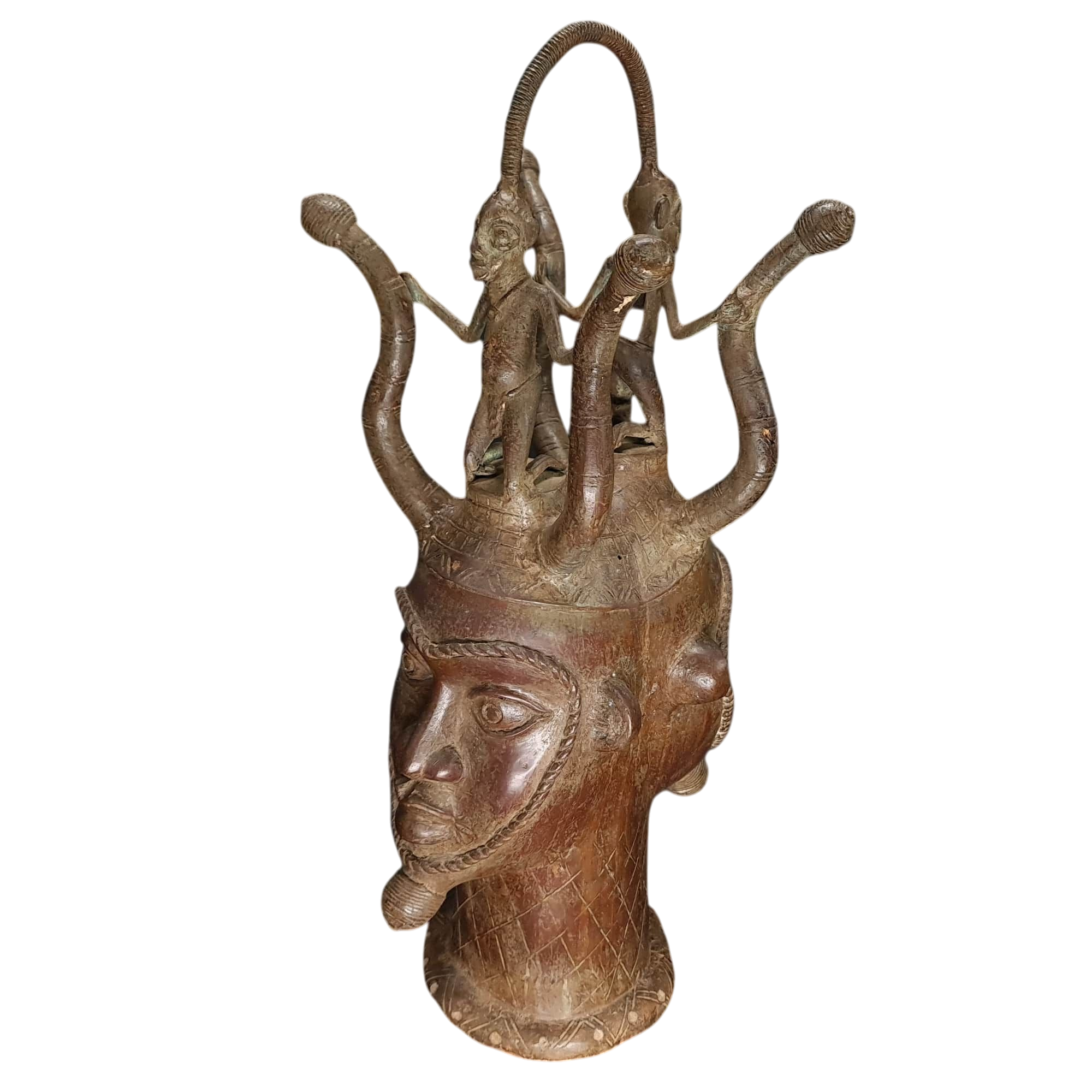Dimensions and Weight:
Weight: 7.183 kg
Height: 57 cm
Width: 27.5 cm
Origin and Cultural Context
Ethnic Group: The Ekoi are known for their artistic traditions, notably wood carving and covering sculptures with skin. Bronze works are less frequent but demonstrate their skill in metalwork.
Ritual Use: Like wooden heads, bronze bicephalous heads are used in ritual contexts, including secret society ceremonies and ancestral worship.
Description and Characteristics
Structure and Form: Bronze bicephalous heads depict two fused human heads. They can be oriented back-to-back or side-by-side, symbolizing duality and the balance of opposing forces.
Manufacturing Techniques: The lost-wax technique is typically used to create these bronze sculptures. This method allows for fine details and high precision in depicting features and patterns.
Decoration: The bronze sculptures may feature ritual scarifications, complex hairstyles, and geometric patterns, similar to those seen on wooden sculptures.
Symbolic Significance
Duality: Bicephalous heads symbolize the duality of human nature, the balance between good and evil, life and death, or the visible and invisible worlds.
Spiritual Power: These sculptures are associated with spiritual power and protection. They are believed to embody powerful spirits capable of protecting the community and bringing blessings.
Use in Secret Societies
Ekpe Society (Leopard Society): Bronze bicephalous heads may be used by the Ekpe society, an influential secret society among the Ekoi and other ethnic groups in the region. This society regulates social justice and ensures ritual protection.
Rituals and Dances: During ceremonies, members of the Ekpe society use these sculptures in dances and rituals to communicate with ancestral spirits and strengthen social cohesion.
Artistic and Historical Importance
Cultural Heritage: Bronze bicephalous heads are part of the rich artistic heritage of West Africa. They are valued for their unique aesthetics and deep ritual significance.
Rarity and Value: Bronze heads are rarer than wooden sculptures, giving them particular value both artistically and historically.
International Recognition: These artworks have attracted the attention of collectors and researchers worldwide. They are present in museum collections, illustrating the importance and beauty of Ekoi art.
Summary
In summary, Ekoi bronze bicephalous heads are culturally valuable ritual and artistic objects. They symbolize duality and spiritual power in Ekoi culture, representing remarkable examples of African art and technical expertise in bronze work.
Provenance
Private collection ZAMBELLI/BRUGNACCHI, assembled between 1990 and 2023.
Transferred to the Spirit Land of Africa Gallery in 2023.
800.00 €





